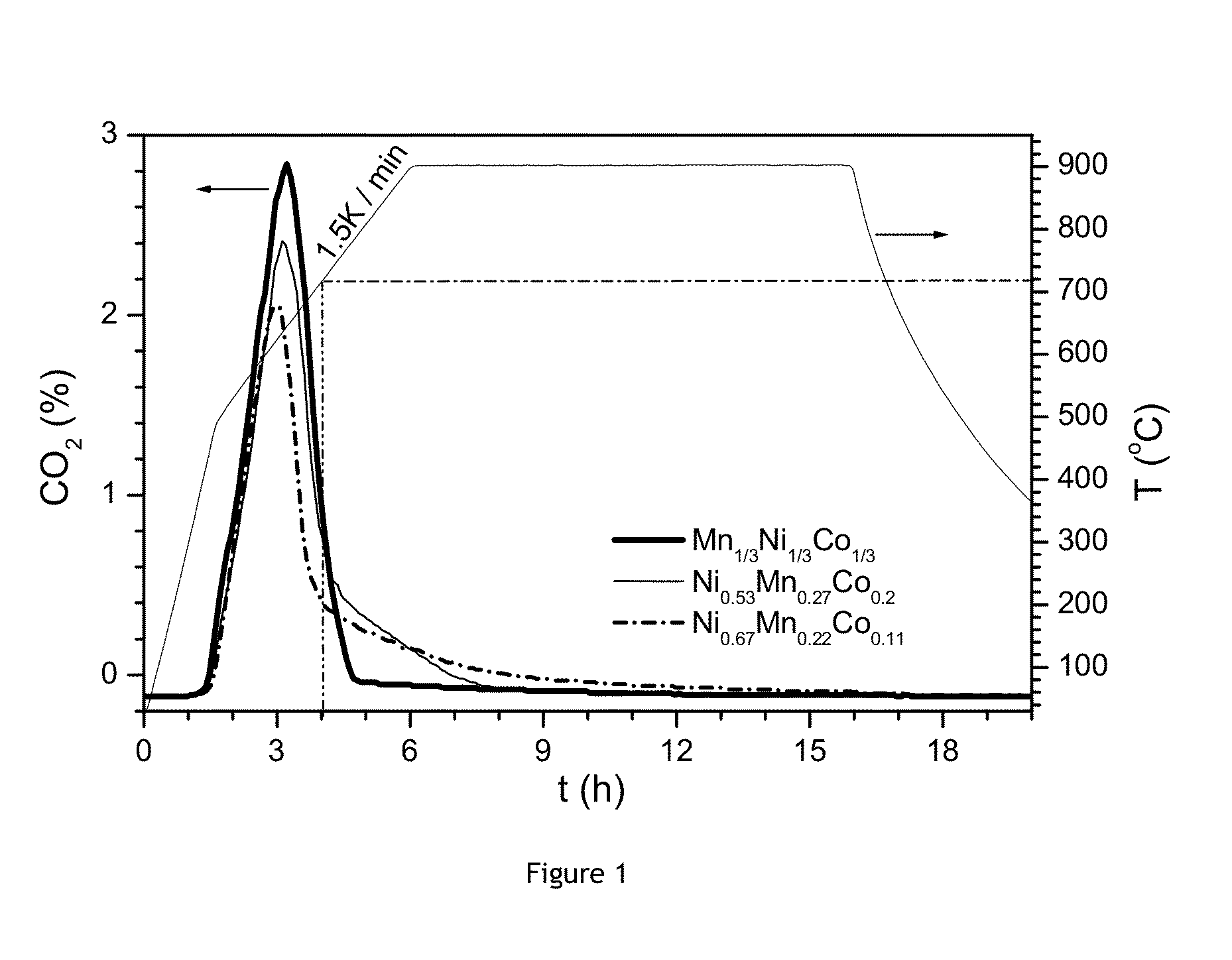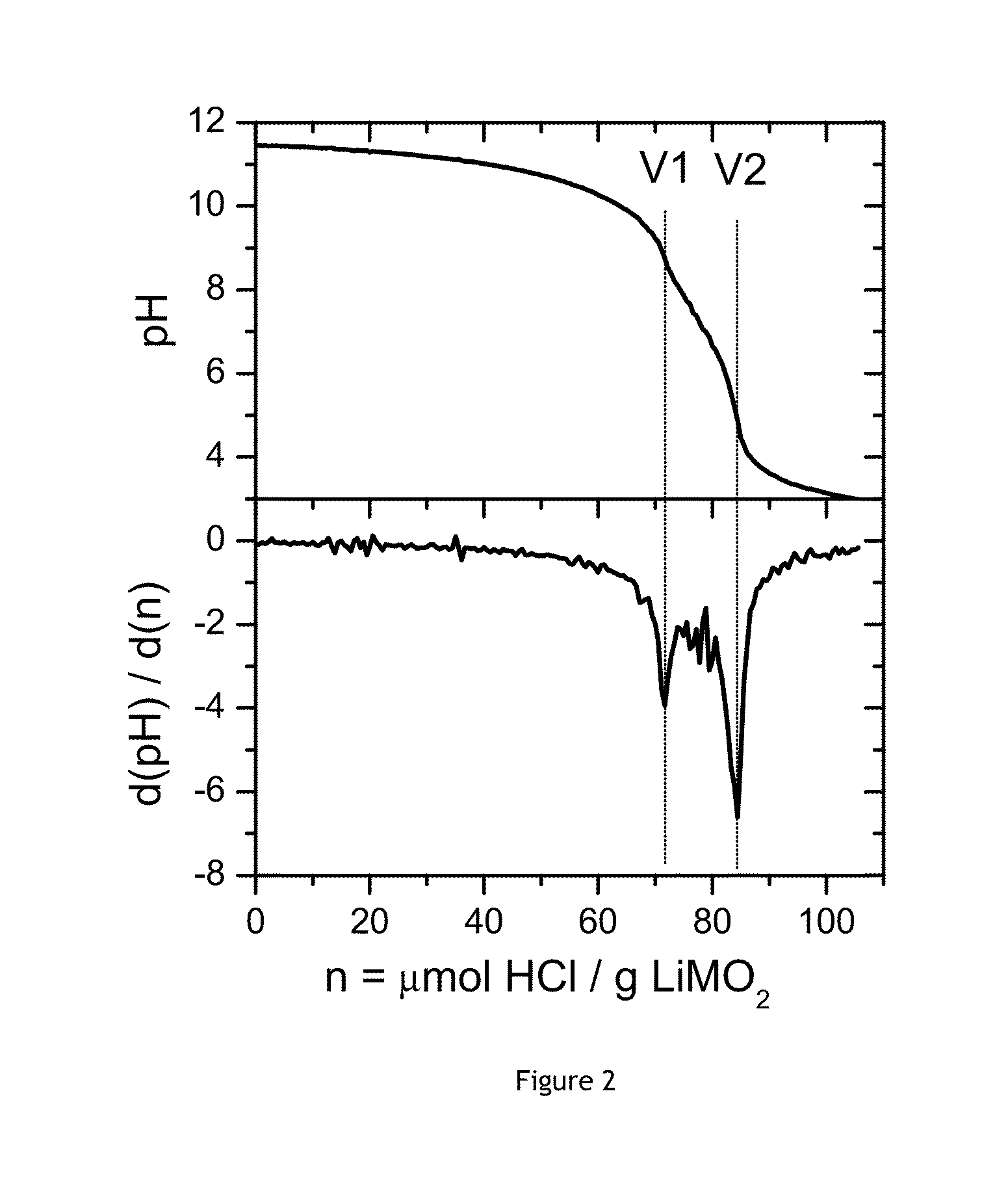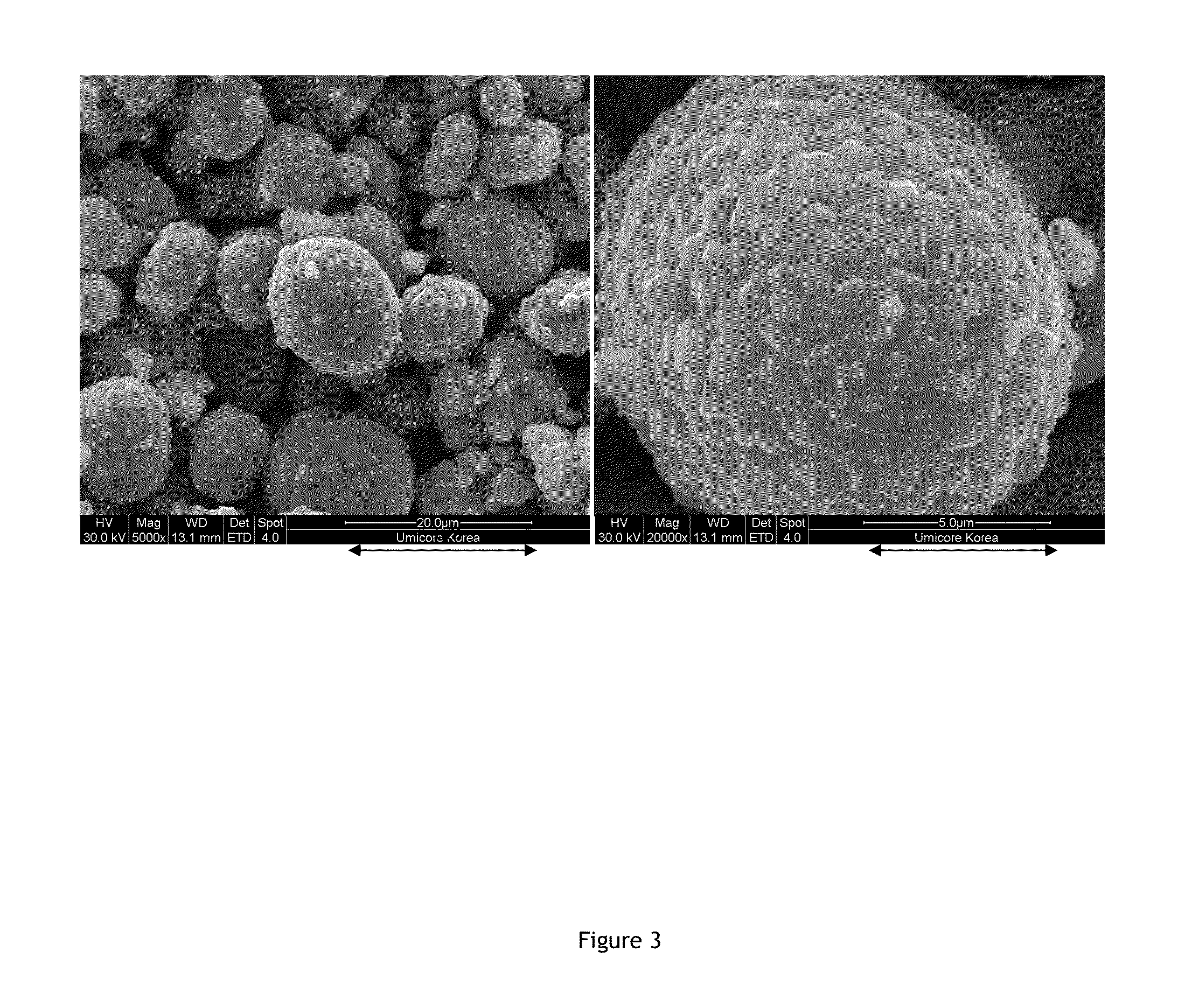High nickel cathode material having low soluble base content
a cathode material and low soluble base technology, applied in the direction of secondary cell servicing/maintenance, cell components, nickel compounds, etc., can solve the problems of low soluble base content, relative scarcity of co resources, and high cost of cobalt metal
- Summary
- Abstract
- Description
- Claims
- Application Information
AI Technical Summary
Benefits of technology
Problems solved by technology
Method used
Image
Examples
example 1
Reaction Kinetics for Different “Z” Values
[0071]Different mixed transition metal hydroxides precursors are obtained from a mass production or pilot plant precipitation line. These precursors are prepared by precipitation of MSO4 precursor by NaOH in the presence of a complexing agent (NH4OH) followed by drying in air. The different precursors are MOOH and will result in Li compounds with increasing Z values:
1) M1=Ni1 / 3Mn1 / 3Co1 / 3 (corresponding to Z=0 in the final LiMO2) (reference example),
2) M2=Ni0.533Mn0.267Co0.2 (Z=0.267) (reference example),
3) M3=Ni0.667Mn0.222Co0.111 (Z=0.444).
[0072]The morphology of the precursors is quite similar: they have 8-10 μm sized spherical particles with a tap density of about 2 g / cm3. These precursors are well mixed with appropriate amounts of Li2CO3, so as to obtain the following Li:M blend ratios: M1) 1.1:1, M2) 1.01:1, M3) 1.01:1. Trays of approx. 23×23×8 cm size are filled with 1 kg of the blends. The blend occupies about 50% of the tray volume. ...
example 2
Measurement of SBC of a Sample LiMO2
[0076]This Example demonstrates a possible method to measure SBC: a pH titration at constant flow. In the following Examples (3-9) this method is used to measure the SBC.
[0077]First a pH electrode is calibrated. 5 g of cathode powder is added to 100 g of de-ionized (DI) water in a closed flask and stirred for 10 minutes. The slurry is filtered under suction and about 98-99 g of clear solution is obtained. The filtering takes only a few seconds. 90 g of the clear solution is used for the pH titration experiment, and can be kept in an open 250 ml glass flask. The pH titration starts within 1 minute after finishing the filtering. During the pH titration experiment the electrode is inserted into the clear solution, which is continuously stirred. After 30 sec the addition of acid (0.1M HCl) is started. The acid is added at a rate of 0.5 ml / min. pH data points can be recorded each 3 seconds. The pH titration occurs at room temperature. The pH titration...
example 3
Equilibrium SBCe for Medium “Z” Material (Ni0.667Mn0.222Co0.111, Z=0.444)
[0083]A mixed transition metal oxyhydroxide precursor MOOR is obtained from a small pilot plant precipitation line. The morphology is spherical with a tap density of approx. 2.2 g / cm3. The D50 of the article size distribution is about 10 μm. The precursor is mixed with appropriate amounts of Li2CO3. The Li:M stoichiometric blend ratios for 4 different samples is listed in Table 1. 200 grams of the blend is filled in trays. 2 trays are simultaneously fired. The dwell temperature is 900° C. When a “normal” airflow of 5 L / min (=about 12 L / min·kg) and a “normal” dwell time of 12 hours is used the samples show a very high SBC and poor performance. Therefore the air flow is increased to 30 L / min, which is a very high number for 400 g blend. 2 series of samples are prepared using either 12 or 24 h firing time (2 trays with each 200 g blend cooked simultaneously). Table 1 summarizes the main data of the experiment and ...
PUM
 Login to View More
Login to View More Abstract
Description
Claims
Application Information
 Login to View More
Login to View More - R&D
- Intellectual Property
- Life Sciences
- Materials
- Tech Scout
- Unparalleled Data Quality
- Higher Quality Content
- 60% Fewer Hallucinations
Browse by: Latest US Patents, China's latest patents, Technical Efficacy Thesaurus, Application Domain, Technology Topic, Popular Technical Reports.
© 2025 PatSnap. All rights reserved.Legal|Privacy policy|Modern Slavery Act Transparency Statement|Sitemap|About US| Contact US: help@patsnap.com



